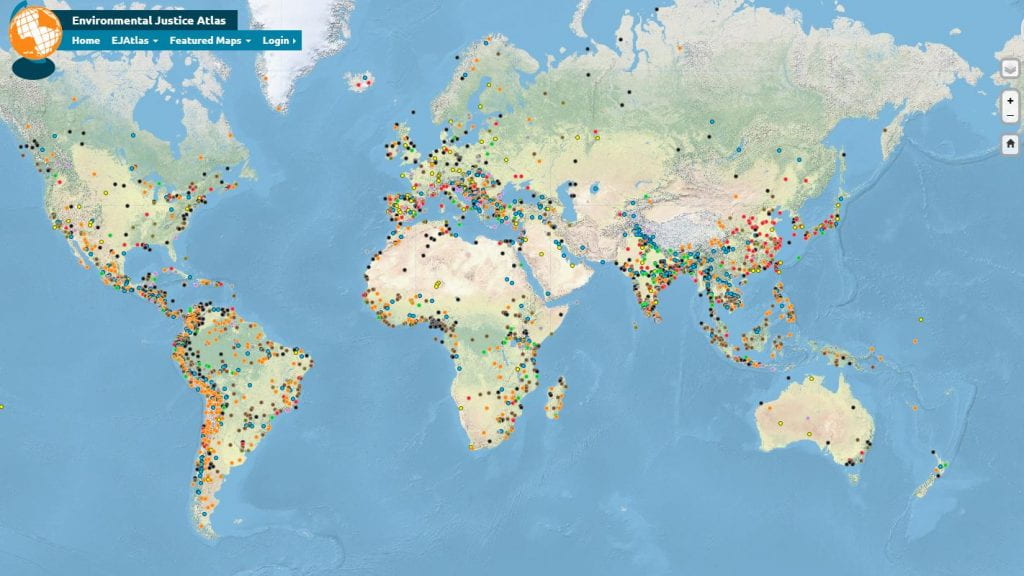Increasingly transparent and diffuse, environmental injustice is pervasive locally, regionally, nationally, and globally. Communities of color, as well as lower-income communities, witness a higher rate of environmental injustice, which imposes disproportionate economic, environmental, and health burdens on these communities. Increased awareness of the universality of environmental injustices helps foster advocacy and educational initiatives to advance environmental justice.
In this third Resource Digest issue, Environmental Justice Associate Fiona Eckert presents the Global Atlas of Environmental Justice, or EJatlas, an online interactive tool that allows users to visualize the scale and nature of environmental injustice instances around the world.
The EJatlas consists of an interactive map that catalogs more than 3,000 crowdsourced cases of conflicts around environmental issues that have or are currently occurring around the world. These conflicts are defined as social movements and mobilizations by local communities, occasionally in conjunction with national or international networks, protesting specific economic activities, infrastructure development, or waste disposal and pollution that have anticipated or proven environmental and social impacts.
Each dot on the map represents a conflict. By clicking on a dot, users can access a wealth of information including the conflict’s background and motivating factors, a description of the project that is being protested against, its visible and potential impacts, a list of all the organizations and groups involved, relevant legislation, academic research, references in the media, and more.
The conflicts are structured into ten categories (each is a different dot color), ranging from nuclear to water and waste management, to tourism recreation and fossil fuels. Searches can be refined by a variety of factors, as well, including the specific country, company, or commodity of interest. The EJatlas also features a number of maps focusing on specific instances of environmental conflicts within certain regions.
By documenting and cataloging social conflict surrounding environmental issues, the Global Environmental Justice Atlas operates as a network for teaching, networking, and advocacy. Further, it collects stories from communities affected by injustice and seeks to mobilize action. The tool also serves as an information hub for groups working on environmental justice to receive information, connect with other groups, and enhance the visibility surrounding environmental conflicts.
Lecturer Scott Krummenacher utilizes the EJ Atlas in the classroom to facilitate student discovery. He explains, “The EJ Atlas is an invaluable resource for faculty, students and others interested in understanding the range of environmental injustices in the world today. The atlas provides stories from those experiencing the problem on the ground and allows students to make connections across issue areas. I’ve found that students learn the most from examples and these clear illustrations are helpful in conveying the many dimensions of the issue.”
Do you have an idea for the Resource Digest Series? We would love to hear it! Email the name of your resource and any other relevant details or links to sustainability@wustl.edu with “Resource Digest” in the subject line. Note: we will only select resources that are free and publicly accessible.
